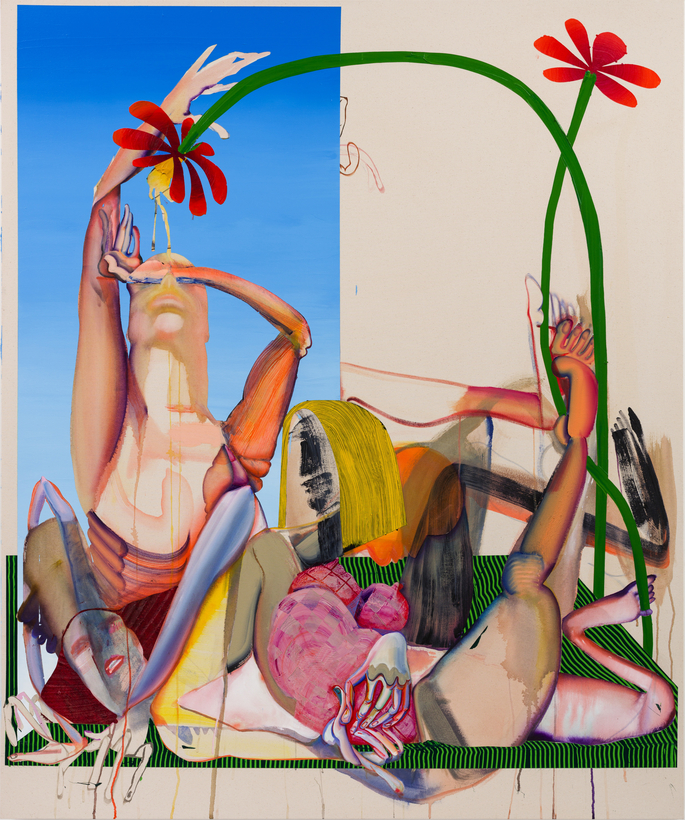Over the last few years, Chicago-born artist Christina Quarles has been the talk of the art world. She creates paintings in unexpected colors, distorted torsos and limbs weaving, dreamlike, in and out of one another. Quarles’s work explores contradictions within universal themes of identity, appearance, and perspective.
I speak to Quarles, 36, on a Zoom call, she from her home, in Altadena, California, where she lives with her wife. Quarles’s stunning paintings hang behind her, but she’s modest about how she got to where she is.
Quarles grew up in Los Angeles in the 90s and early 2000s, close to the Los Angeles County Museum of Art. Her extended family was large and creative. “Nobody was an artist full-time,” she says, “but everybody knew how to draw, for the most part.” At her aunt’s Valentine’s Day parties, collages were pieced together out of Frederick’s of Hollywood catalogues.

The daughter of a single, working mother, Quarles spent most afternoons in day-care centers as a child. “I was just carted around to different child-care options that were the least expensive. And half of those were art classes,” she said. Later, a glossy-picture ad for an art high school, in Seventeen magazine, caught Quarles’s attention. “I got really serious about art as a teenager, as a means to be around a community that really excited me.”
Quarles attended Hampshire College, where she received her B.A. in philosophy and studio arts in 2007. But it wasn’t until her M.F.A. in painting and printmaking at Yale, a few years later, that she began painting in the style she is best known for today.
She says the ideas around identity that are foundational to her work took shape during college, where philosophy offered a way for her to make sense of her inner struggles. “It was really more understanding what I wanted to get across in my paintings that came out through my philosophy studies,” she says.
Quarles identifies as queer and cisgender, but “there really wasn’t that language of being queer at the time” when she came out, in the early 2000s. “I wish that there was,” she says. “If I could’ve, back then, had this identity of being queer, it would have been a lot easier for me.”

Quarles experienced a similar struggle when it came to her racial identity. Born to a Black father and a white mother, she was frequently misidentified as white. “There was a disconnect, even as a little kid, between how I identified and how other people saw me.” She eventually made sense of these realizations in her thesis for her bachelor’s degree, which explored the subject of multiple racial identities. Then, at Yale, she applied similar ideas to oil painting.
Quarles has since moved back to California, where she works in a small at-home studio. Despite her success—late last year, Quarles sold a painting for more than half a million dollars—she doesn’t have a studio assistant.
Last month, Quarles was tapped by Hauser & Wirth, who will represent her along with Pilar Corrias Gallery. She currently has a solo show at Chicago’s Museum of Contemporary Art, with a second opening this week at the South London Gallery. The rest, she says, is up in the air. “What’s the next hustle? What are the things that are actually really important to me as a person and a member of a greater community of people?”
Elena Clavarino is an Associate Editor for Air Mail

